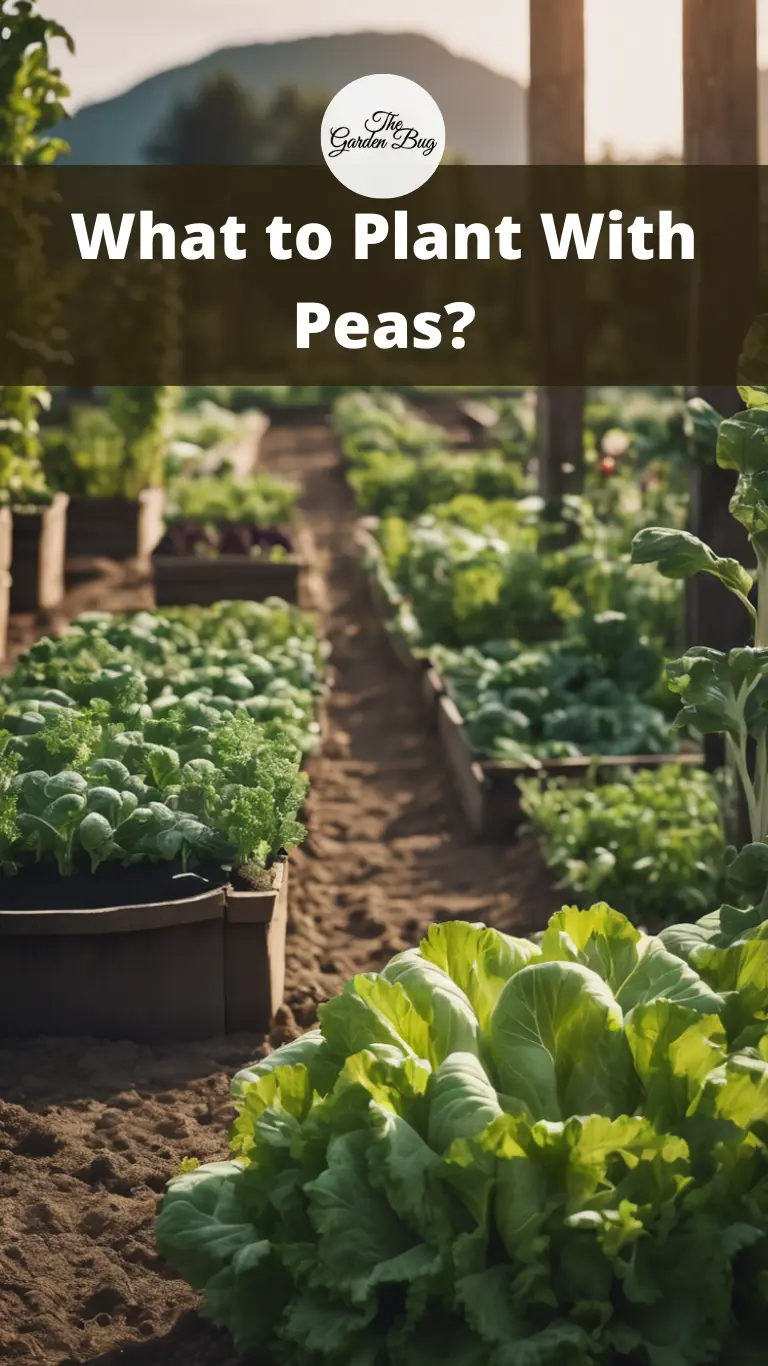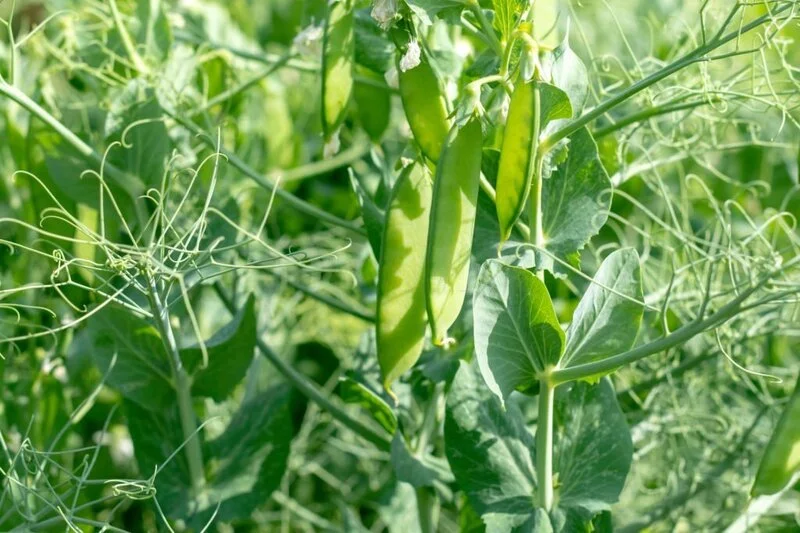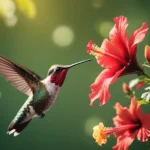If you’ve ever grown peas, you’ll know just how delightful these little powerhouses can be. From the excitement of seeing the first tendrils reach for their supports to the joy of harvesting the plump pods, peas add a lot of fun (and flavor) to any garden. But did you know that peas can also make fantastic team players in your garden? Yes, peas, like people, can benefit from good company. And that’s what we’ll be exploring today – the concept of companion planting, specifically what to plant with peas to help them thrive even more. Let’s get started!
- The original snap Pea; an all-american selections winner. Delicious, fleshy, 3″ Round pods are great to eat whole when fully grown.
- Each packet contains 300 seeds
- Sow outdoors in early spring after the average last frost date and harvest in 70 days.
- Plant Height is 48″. plant spread is 8″. yields 3″ pods.
- Annual for all growing zones from 1-11. Sunlight exposure = full-sun.
Companion Planting
Now, what do we mean by “companion planting”? It’s a centuries-old gardening method where certain plants are grown together because they help each other out in some way. This could be because they deter pests, improve soil health, or even enhance each other’s growth and yield.
But why companion planting for peas? Well, peas are special. They’re part of a group of plants called legumes that have a unique ability – they can “fix” nitrogen from the air into the soil, essentially creating their own fertilizer. This makes them a fantastic companion for many plants that need a little extra nitrogen boost.
But that’s not all! Peas can also benefit from other plants. Some companions can deter pests that peas don’t like, while others can provide a handy trellis for peas to climb. Intrigued? Read on to find out which plants make the best buddies for your peas!
- Burpee exclusive. Our bountiful blend of wild colors! ‘atomic Red’, ‘bambino’, ‘Cosmic purple’, ‘lunar White’ and ‘Solar yellow’. smoothly tapered roots grow to 8″ x 2″ in loose soil
- Each packet contains 1500 seeds
- Sow outdoors in early spring after the average last frost date and harvest in 80 days
- Plant Height is 4″. plant spread is 3″. yields 8″ roots
- Annual for all growing zones from 1-11. Sunlight exposure = full-sun
Best Companion Plants for Peas
The key to a great garden is often a mix of diverse plants, each with their own set of benefits. Here are some of the best companions for your peas:
- Carrots: Peas and carrots aren’t just a classic combo on your dinner plate; they also make great partners in the garden. Peas help to fix nitrogen in the soil, which carrots can use to grow strong and healthy.
- Radishes: Planting radishes among your peas can help deter pea pests like aphids. Plus, radishes are a quick crop, so you can harvest them before the peas need extra space.
- Corn: Corn stalks can act as a natural trellis for peas to climb, and peas can provide extra nitrogen to feed the corn. It’s a win-win!
- Beans: Like peas, beans are also nitrogen fixers. Together, they can improve the fertility of the soil in your garden.
- Beautiful – Large premium packets of Champion, Watermelon, French Breakfast, China Rose, and Minowase (Diakon) Radish seeds. A wonderful variety of shapes and colors that make a great gardening gift. Minimum of 1g per packet.
- Good Eats – The spicy flavor of radishes adds a welcome kick to salads and salsas. Sauteed or roasted, the radish flavor is significantly more mellow.
- Great for Kids – With as few as 25 days from sowing to harvest, this vegetable is a great choice for children to plant and grow. Can also be grown as a fall crop or indoors if given sufficient light. Radishes, especially daikon, make a good cover crop to protect and aerate your soil.
- Easy to Grow – Instructions included on each packet. Plus, we are available to answer all your questions. If these seeds don’t germinate, we will happily make it right for you.
- Safe and Sustainable – Our operation is fully solar powered, and Sow Right Seeds has taken the Safe Seed Pledge to sell only fresh Non-GMO heirloom seeds for you and your family.
How to Arrange Your Garden for Companion Planting
Now that you know which plants pair well with peas, let’s talk about arranging your garden. Here are some tips:
- Think About Sunlight: Peas don’t mind a bit of shade, which is good because some of their companions, like corn, can grow quite tall. Plant your peas on the east side of these taller plants so they don’t get shaded out in the afternoon.
- Consider Growth Rates: Quick-growing crops like radishes can be harvested before the peas get too large, making efficient use of space.
- Use Vertical Space: Take advantage of peas’ climbing nature. Plant them next to corn or sunflowers, and watch as they make use of these natural trellises!
Remember, companion planting is more of an art than a science, so feel free to experiment and see what works best for you and your garden!
- So Many Green Beans – Kentucky Wonder Pole beans are the standard pole bean to grow from seeds because the plant produces heavy yields and is super easy to grow. Each vine will produce numerous pods of delicious green beans that reach from 7-10 inches long.
- Versatile Snap Bean – Kentucky Wonder Pole pods are stringless if harvested young at 5″ or smaller. Harvest frequently to improve production, and succession plant as needed. These vines will require support like a pole or trellis to climb.
- Sustainable Living – Vegetable gardening is an essential foundation of a more self-sufficient lifestyle. Home-grown green beans are generally more flavorful and nutritious than store-bought. Kentucky Wonder Pole beans are excellent whether canned, frozen, or pickled for long-term storage. If grown to full maturity, it can also be a delicious shelling bean.
- Easy to Grow – Seeds are packed in a beautiful paper packet with instructions for successful growing and germination in your home garden. Each package also has instructions for saving seeds after harvest. Getting started is simple for both beginner and experienced gardeners.
- Quality Seeds – Plant now or store for future growing seasons. These seeds will remain viable for years if stored in a cool dry location. Our safe, non-hybrid non-GMO heirloom seeds are always open-pollinated, untreated, and selected to ensure the best germination rates.
Plants to Avoid Planting with Peas
While many plants enjoy the company of peas, some just don’t play well together. Here are a few plants to avoid placing next to your peas:
- Onions and Garlic: These strong-scented plants can stunt the growth of peas. Best to keep these apart in the garden.
- Potatoes: Peas and potatoes compete for the same type of nutrients in the soil, which can result in both crops underperforming.
- Peppers and Tomatoes: These two, while delicious, are susceptible to a blight that can also affect your peas. It’s best to keep some distance between them in the garden.
Conclusion
So there you have it, the secrets of peas’ social life. Who knew that these humble vegetables could have such interesting interactions with their plant neighbors? Remember, your garden is a little ecosystem, and understanding how your plants can help each other is a huge step towards a more productive, healthier garden.
Whether you’re planting peas for the first time or you’re an experienced pea grower looking for ways to improve, we hope this guide on companion planting has given you some new ideas to try. So get out there, plant some peas and their buddies, and watch your garden thrive!









